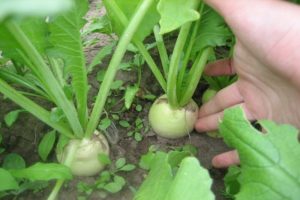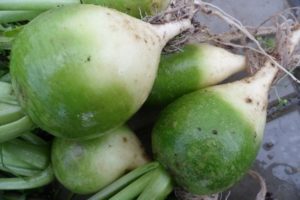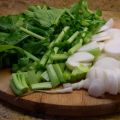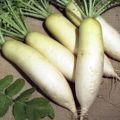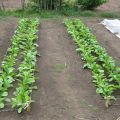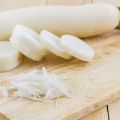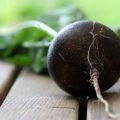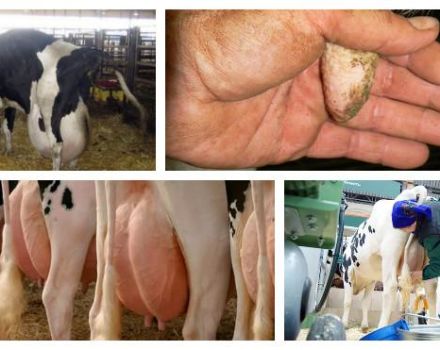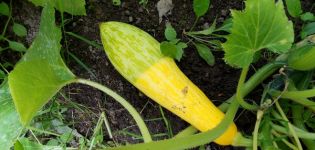Review of the best daikon varieties for open ground and winter storage
Vegetable growers love Japanese radish and grow on their plots all over the world. Breeders have bred many varieties of daikon that are resistant to frost and other weather disasters. The types of radish should be chosen in accordance with the soils characteristic of a particular region, as well as the climate. Long roots are healthy and taste better than radish. The juiciness of the pulp, the mildly pungent taste of the fruit is felt by those who prefer daikon.
Classification of varieties
The sweet type of radish appeared on the tables of Europeans quite recently. Thanks to careful selection and genetic modification, more than 500 daikon varieties have appeared. Fruits differ in shape (from spherical and conical to spindle-shaped spirals), fiber density, brightness of taste.
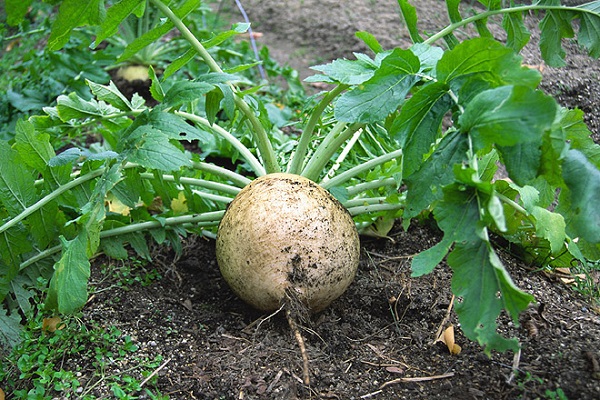
Varieties are classified according to the sowing time, climatic types. When choosing a variety, they look at what length of daylight hours a vegetable needs to fully ripen. There are radishes of spring, summer, autumn and winter types.
Root crops have differences in location in the soil and structure. Depending on the type of culture, soil is selected for cultivation.
Daikon cultivars by soil classification
Those who are going to grow daikon need to understand the characteristics of the types of radish:
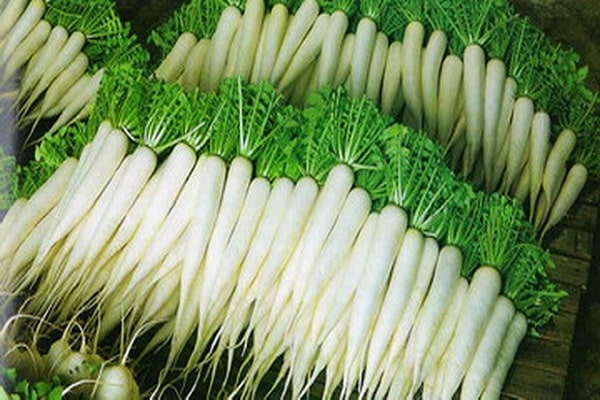
- The Kameido root group can grow on any soil. Sandy soil is especially suitable for vegetables. The small diameter of 5 centimeters and the length of 15 allow the radish to get enough nutrition. Interestingly, a third of the product is on the surface, does not go into the ground. The group includes such varieties as Kameido, Ice Spring, which taste good. They eat not only the fruits, but also the leaves of the radish.
- Shiroagari are grown in clayey areas. The root crop, similar in shape to a cylinder, is two-thirds above the surface. To break through the layers of soil, Baseball, Nightingale the Robber must use force. Therefore, there is a thickening at the bottom of the fetus 30 centimeters long.
- They sink a little into heavy clay soil radish varietiesbelonging to the Shogoin species. Rounded root crops 20 centimeters long ripen within 60-100 days. In areas with heavy soil, you need to plant seeds daikon sasha, Snow White, Pink glitter.
- The Miyashige radish is picky about the soil. For the varieties of this group Dubinushka, Elephant Tusk, a nutritious soil is needed. Growing up to 60 centimeters in length, the daikon of this series is half submerged in the ground.
- Long roots of 60 centimeters, with a girth of 10 in the Minovashi species. Numerous varieties of radish are distinguished by their rapidity of maturation. Usually only a quarter of the fruit is visible from the ground.The best varieties include Russian size, Dragon. The peculiarity of the radish is its intolerance to low temperatures. Even 5 degrees Celsius for a vegetable of this group is considered cold.
- The root vegetable of the daikon Nerim is interesting in shape. Outwardly, it looks like a milky white pear. The ripening time for the Green Dragon, White jam reaches 100 days.
- Conical fruits of the daikons of the Ninengo group. They are white with a green head. The length of the conical root crop is about 60 centimeters with a diameter of 7. The varieties of radish differ - Dragon's Tooth, Omni, Samurai - resistance to frost, lack of flowering.
Types of vegetables are different in shape and soil requirements, but they grow well and give yields, adapted for open ground.
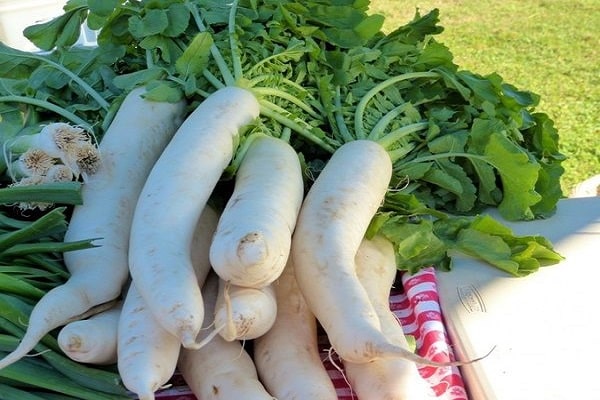
Groups of daikon varieties by climatypes
The daikon is home to the Japanese islands, where the climate is humid and warm. Natural daylight hours there differ from temperate latitudes in length. There are four types of daikon that require different daylight hours.
Spring vegetable varieties, or Haru, must be planted when the snow melts, then the harvest of fruits will be already in early June. If you plant a radish in the middle of summer, then the crop will be harvested before the cold weather. Such varieties are suitable for regions with a temperate climate - the Volga region, the Moscow region, Siberia and the Far East.
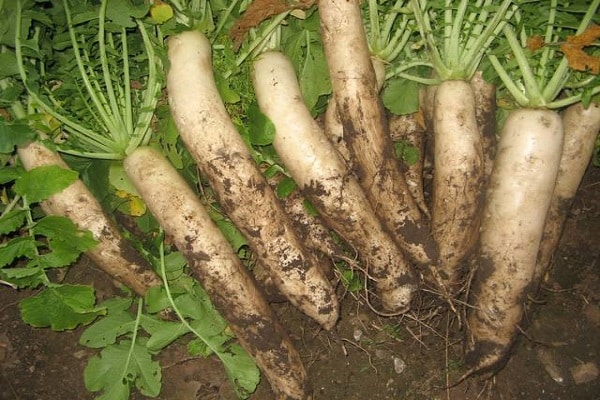
Hatsu, or summer daikon species, are ready to dig in 50 days. They love the heat, so the climate of the southern regions of Russia is comfortable for them.
Autumn varieties, or Aki, are valued for their juiciness, superiority in size compared to other types of white radish. This is the most acceptable group for growing in various areas of the middle lane.... Daikon does not need a long daylight hours, he will sing well with a short day.

The Daikon of the Fuyu group is unknown to gardeners. There is no efficiency from growing radish of this group, therefore it is not worthwhile to cultivate a vegetable.
The best varieties of domestic breeders in terms of ripening
The vastness of the territory, different climatic zones of our country lead to the fact that you need to be able to select daikon varieties. What is suitable for the Moscow region will not mature in Siberia. Although a number of vegetable plants have been bred, which grow successfully in the middle zone, where the climate is temperate, without sudden jumps in temperature.
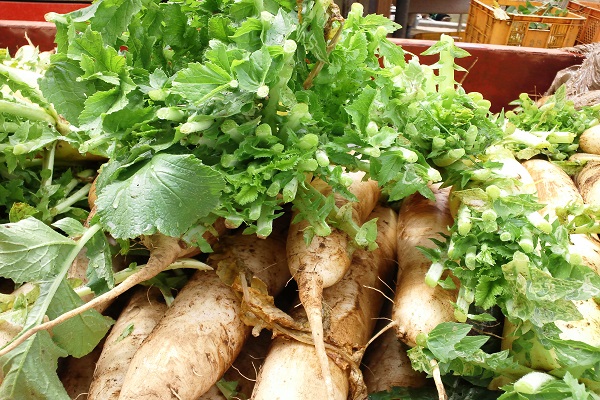
Early ripening
Early types of daikon belong to vegetables with a growing season of 40-50 days after planting:
- Sasha radish is very popular. In addition to early maturity, it is resistant to cold weather. Delicate thin skin, juicy pulp of sweet-spicy taste are the main qualities of the hybrid.
- The Minovashi variety is characterized by juicy and firm pulp, sweetish taste. The cylindrical root crop ripens after 70 days. The crop can be stored for a long time.
- Daikon Russian size will mature 40-45 days after planting. The advantages of Japanese radish include a thin, smooth, white skin, juicy, crispy flesh. The length of the root crop is striking at 0.5 meters, with a diameter of 10-12 centimeters. The vegetable is planted in spring and summer. The weight of a hybrid is 2 kilograms or more.
- The mid-early hybrid Prince of Denmark is famous for its high yields. Up to 2 kilograms of radish are harvested from one square meter. Root vegetable 8-10 centimeters long with white flesh and red skin. The variety is resistant to diseases, flowers.
- After 42 days, the daikon of the summer type Misato Green ripens. Smooth cylinders of fruits reach a length of 12 centimeters, a mass of 300 grams. At the top, the root vegetable is green, then the color changes to white. Radish is used in salads, it is not stored for a long time.
- The hybrid Red Samurai has a root crop 30 centimeters long. But it is striking in its weight, which can be up to 4 kilograms. The skin of the fruit is white and the flesh is pale pink.
- But Snow White has a good keeping quality. Fruits are stored for up to 5 months in the basement.From above they are covered with a light green skin, inside they have juicy snow-white pulp.

For early species, regions where warm weather sets in April are suitable. But early-maturing crops need time for growing from July to September in Siberia, in the Far East.
Mid-season
This group is characterized by a ripening period of 60-80 days.
The Dragon vegetable has a sweetish taste, and the fruits are striking with a large mass of up to 1 kilogram. And the length of the cylindrical root crop reaches 60 centimeters.
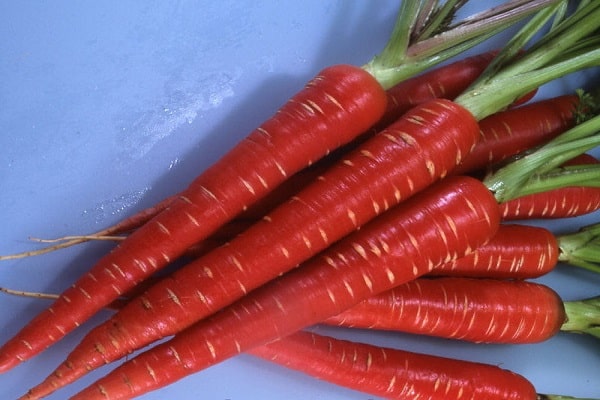
Daikon Dubinushka gains weight of 1.5 kilograms with a length of 50 centimeters. The radish has a sweetish taste with a slight bitterness and snow-white pulp.
It is famous for its cold resistance hybrid pink glitter... It can be grown in areas with short daylight hours. An interesting pinkish color of the pulp with a white skin of the root crop. The length of the radish is only 10 centimeters, the fruit is round in shape.
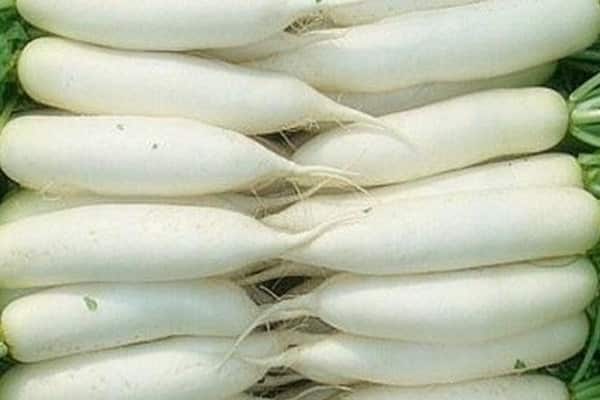
A large bull is characterized by a fetal mass of 3 kilograms. The technical ripeness of the root crop occurs in 75 days. The hybrid is suitable for storage, is not afraid of lower temperatures.
Japanese Caesar radish has cylindrical fruits, white in color. As it grows, the root completely sinks into the ground.
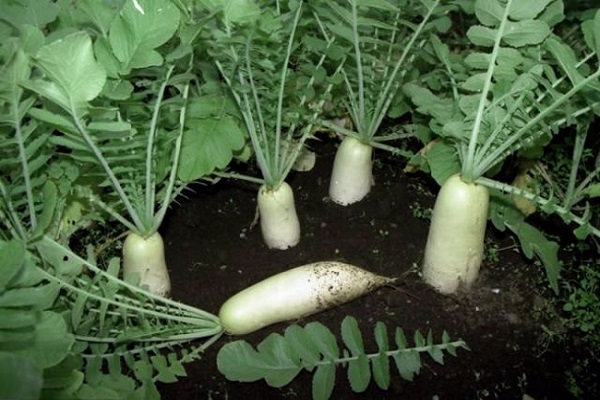
Late ripening
The winter storage variety is characterized by late ripening periods - 90-100 days. Vegetables are distinguished by a large mass of fruits, but in temperate climates they do not have time to ripen.
Among the best are:
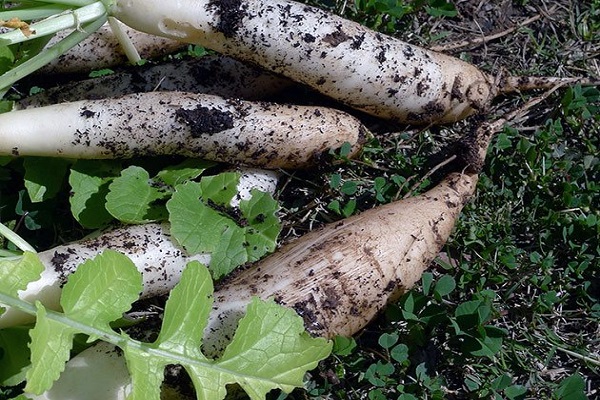
- Japanese long with root weight up to 3 kilograms, long shelf life.
- An elephant's canine tooth with a fruit length of 60 centimeters and a weight of 0.5 kilograms.
- Nerima, which yields a 60 cm long white root crop after 100 days.
In order for late-ripening daikon species to mature, they are planted early, in April. Sown later, they will not be able to please with tasty large fruits.

